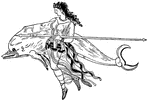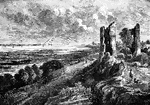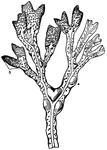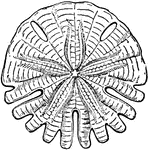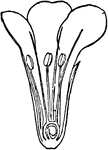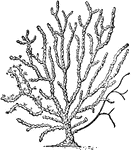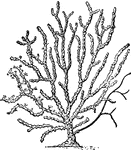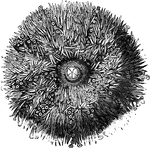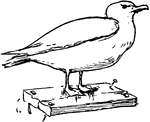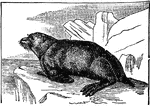
Marine Algae of New England
Similar section of a sterile conceptacle, containing slender antheridia.

Evolute Spiral Modern Border
The evolute spiral modern border is a wavelike pattern that mimics the waves of the sea.

Head of Neptune
"The following cut from an antique in the British Museum, represents the head of Neptune. The hair rises…

Polished nerita
"The polished nerita, Nerita polita, is distributed through nearly all tropical seas." —…

Evolute Spiral Painting
The evolute spiral painting is a wavelike pattern that mimics the waves of the sea. Designed during…

Evolute Spiral Paintings
The evolute spiral paintings is a wave pattern that mimics the wave of the sea. In this design it was…

Evolute Spiral Paintings
The evolute spiral paintings is a wave pattern that mimics the wave of the sea. In this design it was…

Evolute Spiral Paintings
The evolute spiral paintings is a wave pattern that mimics the wave of the sea. In this design it was…

Evolute Spiral Paintings
The evolute spiral paintings is a wave pattern that mimics the wave of the sea. In this design it was…

Paul is Shipwrecked on Malta
"But lighting upon a place where two seas met, they ran the vessel aground; and the foreship struck…

Peanut Worm - Interior Anatomy of Larva
Sipunculus nudus. A species of unsegmented marine worm, commonly called the peanut worm. "B, Larval…
Progressive Offlapping
Section to illustrate the arrangement and change in facies in an offlapping series formed during a retreatal…
Progressive Overlap
Section to show normal progressive overlap of the formations and their shoreward change from muds to…

Psammechinus esculentus
"A common European type of the group is the species Psammechinus esculentus. In certain forms the test…
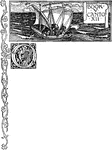
Fairy Queen
This is an illustration of the Fairy Queen by English artist Walter Crane in 1896. It is an English…
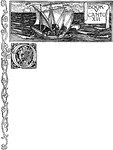
Fairy Queen
This is an illustration of the Fairy Queen by English artist Walter Crane in 1896. It is an English…
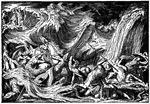
The Red Sea Swallows Pharaoh and His Army
"And Moses stretched forth his hand over the sea, and the sea returned to its strength when the morning…

Red Whelk
Fusus antiquus. "...a division of prosobranchiate gastropods, having the lip of the shell notched, canaliculate,…
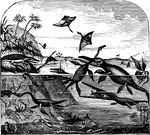
Reptiles
In this age the animals and plants begin to resemble existing species. The age is characterized mainly…
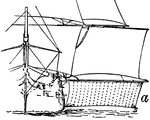
Save-All, or Catch-All
"A small sail set under another, or between two other sails, to catch or save the wind." —Whitney,…
Sawfish, Side View
Pristis pectinatus. "1. An elasmobranchiate or selachian fish of the family Pristidae, having the snout…
Sawfish, View from Underneath
Pristis pectinatus. "1. An elasmobranchiate or selachian fish of the family Pristidae, having the snout…

Sea Colander
Agarum Turneri, Sea Colander, so called from the perforations with which the frond, as it grows, becomes…

Sea lavender
"Sea lavender (statice limonium) is a native British plant, being fairly common in certain…
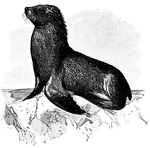
Sea Lion
Otaria jubata. One of several large eared seals, or otaries. Also called "Cook's otary" or the "Patagonian…

Sea Porcupine
"Have a large air-bladder, which they inflate by swallowing air, till they appear almost like balls.…

Sea Scorpion
"Is five to eight inches long; is very voracious, swims rapidly, and si found under stones and sea-weed…

Sea-anemone
"Their tentacles, which are disposed in regular circles, and tinged with a variety of bright lively…

Mouth of the sea-anemone
"Their tentacles, which are disposed in regular circles, and tinged with a variety of bright lively…
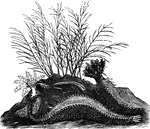
Angular sea-cucumber
"The Angular Sea-Cucumber, C. pentactes, is also a European species, with double rows of warty…

Common sea-cucumber
"Sea-Cucumbers are of various forms, some of the species being found in nearly all seas. They…
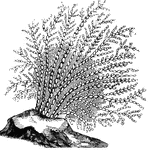
Sea-fan
"In the family of the Gorgonidae the substance of the polypidom is collected into a solid central axis,…

Sea-pen
"The main stem of the polypidom of these animals is fleshy, but is furnished with an internal bony axis,…

Bicolored sea-snake
The bicolored sea-snake is found in the waters of the Pacific Ocean, especially in the vicinity of Tahiti.

Common European sea-star
"The colors in this are variable but brilliant - red, purple, green, and white. It measures from nine…

Sea-urchin without spines
"The globular crest of this animal is made up of several hundred polygonal pieces of different sizes,…

Seahorse
"These animals have a head of the shape of a horse, and a long tail without any fin, but which is used…

Elephant Seal on a Rock
"The seal Macrorhinus elephantinus or proboscideus, or Morunga proboscidea. It is the largest of the…

Leopard Seal
Leptonychotes weddelli. "A spotted seal of the southern and antarctic seas, belonging to the family…
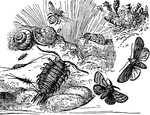
Types of Seashore Life
16. Andrena cineraria, 17. Helix virgata, 18. Pod-lover moth, 19. Anurida maritima, 20. Machillis maritima,…

Types of Seashore Life
24. Various corals, 25. Razor-shell, 26. Cockle, 27. Various winkels, 28. Shore crab, 29. Father lasher,…

Types of Seashore Life
1. Sea-plantain. 2. Sea-pink 3. Sea-reed, 4. Sea Rocket, 5. Sea Campion, 6. Sea-holly 7. Sea-spurge…
Seawolf
"Three to seven feet long, agreeing with the gobies in the abscence of the air-bladder; the pectoral…

